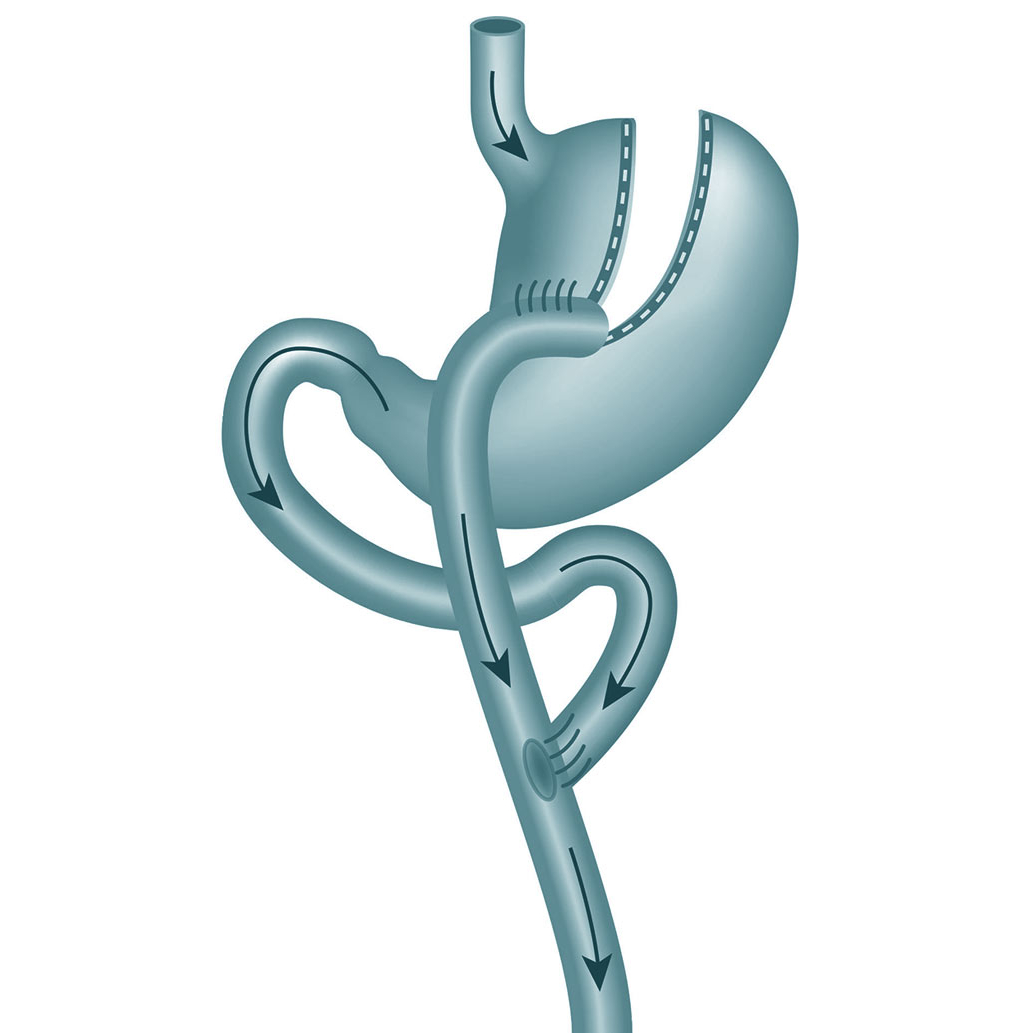Roux-en-Y Gastric Bypass
The Roux-en-Y gastric bypass is a well-established bariatric procedure with a strong track record of long-term success. In use for over 50 years, it is widely regarded as one of the most effective surgical options for weight loss and the treatment of obesity-related conditions like Type 2 diabetes and severe reflux.
It works through a powerful combination of restriction and malabsorption – reducing how much you can eat while also limiting how many calories and nutrients are absorbed.
How the procedure works
The surgery begins by creating a small pouch from the upper part of the stomach – reducing stomach volume from around two litres to about 30 millilitres. This pouch is then connected to a lower section of the small intestine, allowing food to bypass most of the stomach and the upper small bowel.
A second connection is made to re-route digestive juices from the bypassed stomach and pancreas back into the bowel further downstream, where they can help process food.
Why choose Roux-en-Y bypass?

Key advantages:
- Rapid and sustained weight loss – most patients see significant results in the first 12 months
- Long-term data shows durable outcomes beyond 20 years
- Highly effective at improving or resolving Type 2 diabetes, often within days
- Naturally discourages intake of high-sugar, high-fat foods through “dumping syndrome”
- Often chosen for patients with both obesity and severe gastro-oesophageal reflux
Considerations:
- As with other bypass procedures, lifelong supplementation is essential
- Potential for long-term issues such as ulcers or internal hernias (though uncommon)
- Slightly more complex procedure than gastric sleeve or OAGB
Is Roux-en-Y right for me?
This procedure is often recommended for patients who have obesity-related complications like reflux, diabetes. It is also suitable for those looking for a well-established, long-term option with strong evidence behind it.
Our team will guide you through a full assessment to determine whether this is the most appropriate option for your situation.
What to expect after surgery
- Most patients stay in hospital for 1 to 2 days
- Recovery is gradual, with a return to normal activities over several weeks
- Eating is reintroduced through a structured nutrition plan
- Ongoing support ensures safety, nutritional balance, and long-term success
Begin your wellness journey today
You don’t have to have it all figured out. Whether you’re just starting to research or ready to move forward, we’re here to help you make an informed decision that works for your life.
Your Body Mass Index (BMI) helps assess whether you might benefit from surgery.
We’ll send you an easy-to-read guide that outlines options, eligibility, and what to expect.
A referral by your GP is required. Talk with our team to understand what might be right for you.

